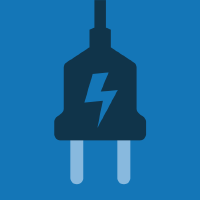Topic Menu
► Topic MenuTopic Editors



Smart Energy Systems, 2nd Edition
Topic Information
Dear Colleagues,
There are some definitions for what a Smart Energy System is. Terms such as: cost-effective, sustainable, secure, renewable energy production, storage systems, demand-side response, electrical vehicles, energy efficiency, active users, and intelligent networking are often associated with the Smart Energy System concept. It is a broader term than Smart Grid, in the sense that it includes more sectors (electricity, heating, cooling, industry, buildings, transportation, and water) rather than focusing exclusively on the electricity sector. Smart Energy Systems are closely related to the ongoing energy transition toward a 100% renewable energy system.
We are pleased to invite the research community to submit review or regular research papers on, but not limited to, the following relevant topics related to Smart Energy Systems:
- Hydrogen systems;
- Storage technologies and systems;
- Demand side response;
- Electrical Vehicles;
- Planning, operation, control, and management;
- Modeling, simulation, and data management;
- Ancillary services;
- Power electronic converters and drives;
- Smart thermal grids;
- Smart gas grids;
- Smart electricity grids;
- Energy efficient systems;
- Virtual power plants;
- Renewable energy production and integration;
- Micro-Grids;
- Power-to-H2O (desalination and water purification);
- Hybrid AC/DC grids;
- Off-grid hybrid renewable systems;
- Artificial intelligence and optimization;
- Demand, Production, and weather forecast;
- Smart homes, cities, and communities;
- Efficient buildings and Net Zero Energy Buildings;
- Power quality;
- Protection systems and reliability;
- Sensors, communications, and intelligent networking;
- Smart metering;
- Virtual power lines;
- Security and privacy of data exchange;
- Life cycle assessment;
- Public policies;
- Local markets;
- Flexibility markets;
- TSO-DSO coordination;
- Education.
Prof.Dr. Hugo Morais
Prof.Dr. Rui Castro
Dr. Cindy Guzman
Topic Editors
Keywords
- hydrogen systems storage technologies and systems
- smart thermal grids
- electrical Vehicles
- smart gas grids
- smart electricity grids
- hybrid AC / DC grids
- energy efficient systems
Participating Journals
| Journal Name | Impact Factor | CiteScore | Launched Year | First Decision (median) | APC | |
|---|---|---|---|---|---|---|

Applied Sciences
|
2.7 | 4.5 | 2011 | 16.9 Days | CHF 2400 | Submit |

Batteries
|
4.0 | 5.4 | 2015 | 17.7 Days | CHF 2700 | Submit |

Buildings
|
3.8 | 3.1 | 2011 | 14.6 Days | CHF 2600 | Submit |

Data
|
2.6 | 4.6 | 2016 | 22 Days | CHF 1600 | Submit |

Electricity
|
- | - | 2020 | 20.3 Days | CHF 1000 | Submit |

Electronics
|
2.9 | 4.7 | 2012 | 15.6 Days | CHF 2400 | Submit |

Energies
|
3.2 | 5.5 | 2008 | 16.1 Days | CHF 2600 | Submit |

Smart Cities
|
6.4 | 8.5 | 2018 | 20.2 Days | CHF 2000 | Submit |

MDPI Topics is cooperating with Preprints.org and has built a direct connection between MDPI journals and Preprints.org. Authors are encouraged to enjoy the benefits by posting a preprint at Preprints.org prior to publication:
- Immediately share your ideas ahead of publication and establish your research priority;
- Protect your idea from being stolen with this time-stamped preprint article;
- Enhance the exposure and impact of your research;
- Receive feedback from your peers in advance;
- Have it indexed in Web of Science (Preprint Citation Index), Google Scholar, Crossref, SHARE, PrePubMed, Scilit and Europe PMC.

